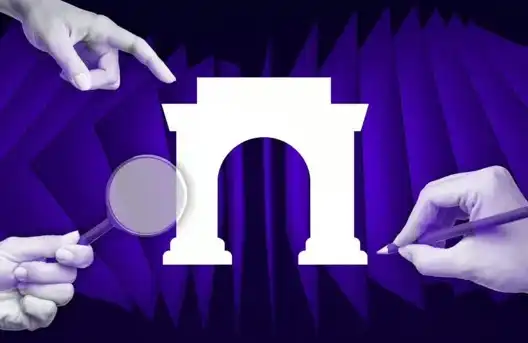Mitosis: a liquidity protocol for the modular era
The crazy market launch of TIA some time ago and Celestia behind it have once again attracted public attention to the concept of modularity. Celestia's market cap hit $2.95 billion in March 2024, having surged eightfold in the past five months. In addition to Celestia, modular product Dymension launched on November 15, 2023, with approximately 14,000 rollapps deployed. Eigenlayer has $2.5 billion worth of assets locked in the agreement.
The asset growth rate of Ethereum Layer 2 is not to be outdone. Arbitrum has 7.8 billion US dollars of ETH flow only through canonical bridge transactions; Optimism and zkSync rollups Millions of transactions are executed every day.
Will the development of modular blockchain architecture and the rapid growth of Ethereum Layer2 assets herald the coming of the modular era? Mitosis in this article is a liquidity protocol created to solve the scalability problem of cross-chain liquidity in the modular era.
Modular flow protocol to meet future cross-chain needs
One of the DeFi multi-chain extensions A key prerequisite is a well-functioning cross-chain protocol, and today's cross-chain landscape revolves around protocols such as Stargate and Across, which address cross-chain needs within the Ethereum L1 or L2 ecosystem. LPs share protocol fee revenue without further utilization of locked assets, chain connections are retained and updated in a permissioned manner, and proprietary trust assumptions guarantee the security of each solution. The current setup can and should be adjusted to fully meet the upcoming cross-chain needs of the multi-chain era.
Mitosis believes that the key is to allow cross-chain liquidity to scale with the entire DeFi ecosystem, and to make locked assets composable, making LPs feel confident value, and aims to achieve this goal from the following aspects
Ensure capital efficiency scalability
The only use case for liquidity networks today is cross-chain transfers. While this should be the basic use case for cross-chain liquidity, the lack of further utilization may make cross-chain LPing less attractive than other DeFi use cases. Because a large amount of liquidity is needed to meet the upcoming high demand for cross-chain transactions between modular blockchains, severe transaction restrictions may result.
Mitosis makes cross-chain LPing more attractive by making it liquid. Mitosis LP receives derivative tokens that can be exchanged for 1:1 with its locked assets. LP can use these derivative tokens to participate in various DeFi applications on the supported Ethereum L1 chain and L2 Rollup, essentially enabling LP to make it cross-chain. Assets receive additional benefits on top of default fee sharing.
Mitosis LP can also seamlessly import its derivative tokens into the Mitosis Chain. The Mitosis DeFi Ecosystem is our proposal to redefine cross-chain trading, replacing traditional chain-to-chain execution with an efficient approach using derivative tokens on the Mitosis Chain, guaranteeing instant finality.

Achieve flexible network scalability
Contrary to the blockchain industry’s ongoing transition to modularity and permissionless, today’s cross-chain interoperability remains siled. The Liquidity Network can only serve chains integrated through its underlying Any Message Bridge (AMB) solution. This results in a subordinate structure where chains rely on permissioned AMB connections to provide cross-chain liquidity to their users. This interoperability setup lacks the scalability suitable to meet the high cross-chain demands of many upcoming modular blockchains.
Mitosis’ cross-chain liquidity is built on permissionless interoperability, a core philosophy of its strategic partner Hyperlane. Anyone can quickly deploy Mitosis smart contracts and connect to other modular chains through the rapid governance process on Mitosis. By freeing liquidity from the underlying structures of AMB solutions, Mitosis ensures sovereignty and brings cross-chain interoperability to the same level as the ongoing modular transition.

Adopt robust security scalability
Today’s cross-chain security cannot scale with the locked LP assets it is supposed to protect.
For solutions protected by AMB operators, there seems to be a conflict between clearly visible TVL and the opacity of penalties that operators have to pay for malicious behavior. match. For solutions secured by a PoS chain and governance tokens, the number of staked tokens inevitably sets a cap on the growth of TVL, as PoS node operators are incentivized to profit from the protocol once the economic security threshold is breached. In today’s cross-chain protocols, there are still questions about whose responsibility this is.

Mitosis adopts an encrypted economic security structure. As the TVL of the protocol increases, the The structure becomes more robust. In addition to the security of Mitosis Chain PoS operated by a trusted group of validators, Mitosis plans to leverage the security of re-collateralized ETH to validate cross-chain messaging. Additionally, cross-chain LPs can choose to offer their derivative tokens to secure Hyperlane-powered cross-chain messaging and be rewarded with Mitosis governance tokens.
The "composition" of Mitosis
miAsset
miAssets are cross-chain LP tokens minted at a ratio of 1:1 to deposited assets. The value of miAssets is always tied to the primary asset at a 1:1 ratio. However, if deposits help balance the Mitosis Vaults, additional miAssets may be issued upon minting; if redemptions have a larger impact on the Mitosis Vaults imbalance, a small penalty may be imposed.
miAssets accumulate revenue by default. Users can obtain rebasing benefits by simply holding miAssets. The default yield for miAssets is related to the cross-chain activity facilitated by leveraging the provided assets. Fees generated by cross-chain users are allocated to LP. This distribution occurs in a rebase format, similar to stETH. The number of miAssets increases in real time.
Mitosis Architecture
Mitosis Liquidity Protocol consists of Mitosis Vaults, Mitosis Chain, Hyperlane AMB and Mitosis ISM composition.
Mitosis Vaults
Mitosis Vaults can guarantee liquidity Safety. These are smart contracts deployed in every network supported by the Mitosis Liquidity Network.
On supported networks, Liquidity Providers (LPs) deposit their assets into Mitosis Vault. Mitosis Vault securely stores assets and initiates the miAsset minting process. Limited partners receive miAssets in a 1:1 ratio to their deposited primary assets. (e.g. deposit eETH, receive meETH). With these miAssets, LPs can engage in various DeFi activities. When LPs wish to recover their primary assets, their miAssets will be burned and the original assets will be withdrawn from the Mitosis Vault.
Mitosis Chain
The Mitosis chain is an EVM-compatible Cosmos chain. It plays a dual role: incubating various DeFi protocols and acting as the source of truth for cross-chain activity.
For LPs, this ecosystem is a particularly interesting place to take advantage of miAssets, as it brings together assets from different networks in the form of miAssets. For cross-chain users, the DeFi protocol within the Mitosis ecosystem facilitates the execution of various cross-chain activities.
Mitosis Ledger Module
Operating cross-chain activities is challenging sexual, because state changes occur on different chains, resulting in a large number of sources of truth.
To ensure the feasibility of certain cross-chain activities and prevent unnecessary gas costs, the network must monitor the Mitosis liquidity network connected to each chain Mitosis Vault. However, as the number of supported networks grows, the efficiency of this task decreases exponentially or even becomes impossible. To solve this problem, Mitosis Chain maintains the Mitosis Ledger – a common source of truth. All cross-chain activities pass through the Mitosis Chain, which records these activities on the Mitosis ledger. The Mitosis Ledger ensures a reliable source of truth; the network only needs to refer to the Mitosis Chain.
Development Route
Mitosis’s project route consists of 4 unique phases, which are currently Complete stage one and stage two.
Phase 1: Closed testing with a selected group of validators (completed in December 2023)
Phase 2 (Expedition): Mitosis Expedition Test Network (March 8, 2024 - March 15, 2024)
Phase 3: Public Testnet (Q2 2024)
Phase 4: Mainnet + TGE (Q3 2024)
p>The Mitosis expedition is the beginning of LRT’s cross-chain expansion, and Liquidity Rehypothecation Token (LRT) has the potential to become the next generation DeFi primitive. Mitosis is perhaps a rare multi-chain transformation partner for LRT and has partnered with LRT market leader EtherFi as Expedition’s first partner to participate in eETH’s multi-chain transformation.
Welcome to join the official BlockBeats community:
Telegram Subscription Group: https://t.me/theblockbeats
Telegram Discussion Group: https://t.me/BlockBeats_App
Official Twitter Account: https://twitter.com/BlockBeatsAsia
 Forum
Forum OPRR
OPRR Finance
Finance
 Specials
Specials
 On-chain Eco
On-chain Eco
 Entry
Entry
 Podcasts
Podcasts
 Data
Data


 Summarized by AI
Summarized by AI







